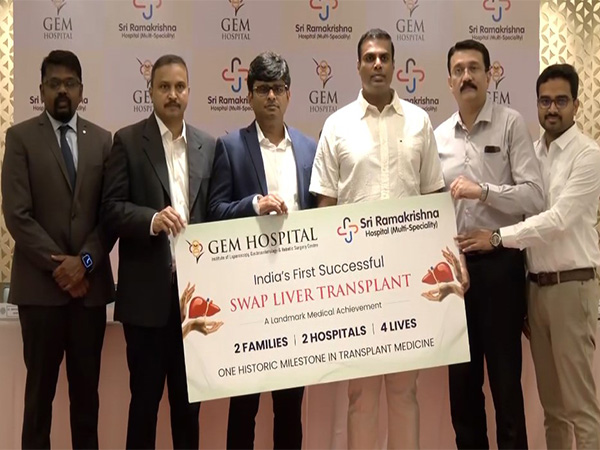Pioneering Inter-Hospital Liver Swap Transplant in Coimbatore
In a monumental medical breakthrough, hospitals in Coimbatore performed India's first inter-hospital liver swap transplant. This groundbreaking procedure saved two patients by exchanging donors between families, expanding possibilities for those with end-stage liver disease.

- Country:
- India
In a remarkable medical first for India, two hospitals in Coimbatore have achieved the country's inaugural inter-hospital swap liver transplant. This innovative procedure has granted fresh hope and new life to two patients suffering from end-stage liver disease.
The groundbreaking surgery was a collaborative effort between GEM Hospital and Sri Ramakrishna Hospital. Significantly, this was not the first time GEM Hospital has been at the forefront of transplant innovation, having pioneered laparoscopic living donor surgery in 2017. The recent success story involved meticulous coordination in patient evaluation, donor-recipient matching, and pre-operative planning.
Both a 59-year-old man from Salem and a 53-year-old man from Tiruppur were in urgent need of liver transplants. Their wives, potential donors, were disqualified due to blood type incompatibility. A swap transplant emerged as the ingenious solution: each wife donated her liver to the other's husband. Performed simultaneously on July 3, 2025, in both hospitals, the surgery was a medical triumph. Dr. Anand Vijay from GEM Hospital highlighted the potential ripple effects, suggesting that such transplants could reduce waiting times and improve outcomes.
Conventional liver transplants typically involve direct donations from relatives, but swap transplants allow families to exchange donors, markedly expanding the donor pool. Dr. R Jayapal of Sri Ramakrishna Hospital emphasized the extensive planning involved, including matching blood groups and liver quality between the cross-hospital teams.
The operation's success marks a historical feat in Indian medical practice, as it was the first time such a complex swap procedure transcended institutional boundaries. Real-time coordination was pivotal on the day of surgery, ensuring both patients could recover and return home comfortably. This innovative approach promises to reshape the future landscape of liver transplant possibilities.
(With inputs from agencies.)










